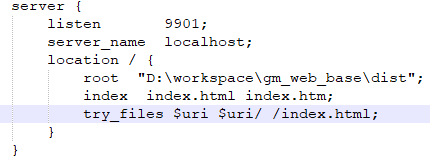I would like to keep some cells in attention by making their borders clearly distinct from anything else.
The parameter rect.col is used to colorise all borders but I want to colorise only borders of the cells (3,3) and (7,7), for instance, by any halo color etc heat.colors(100) or rainbow(12).
Code:
library("corrplot")
library("psych")
ids <- seq(1,11)
M.cor <- cor(mtcars)
colnames(M.cor) <- ids
rownames(M.cor) <- ids
p.mat <- psych::corr.test(M.cor, adjust = "none", ci = F)
p.mat <- p.mat[["r"]]
corrplot(M.cor,
method = "color",
type = "upper",
tl.col = 'black',
diag = TRUE,
p.mat = p.mat,
sig.level = 0.0000005
)
Fig. 1 Output of the top code without cell bordering,
Fig. 2 Output after manually converting all coordinates to upper triangle but artifact at (10,1),
Fig. 3 Output with window size fix



Input: locations by ids (3,3) and (7,7)
Expected output: two cells where borders marked on upper triangle
Pseudocode
# ids must be id.pairs
# or just a list of two lists
createBorders <- function(id.pairs) {
labbly(id.pairs,function(z){
x <- z$V1
y <- z$V2
rect(x+0.5, y+0.5, x+1.5, y+1.5) # user20650
})
}
corrplot(...)
# TODO Which datastructure to use there in the function as the paired list of ids?
createBorders(ids.pairs)
Testing user20650's proposal
rect(2+0.5, 9+0.5, 3+0.5, 10+0.5, border="white", lwd=2)
Output in Fig. 2. It would be great to have a function for this. Assume you have a list of IDs.
I think there is something wrong with the placement because (2,3),(9,10) leads to the point in (2,3),(2,3).
Iterating user20650's Proposal in Chat
library("corrplot")
library("psych")
ids <- seq(1,11)
M.cor <- cor(mtcars)
colnames(M.cor) <- ids
rownames(M.cor) <- ids
p.mat <- psych::corr.test(M.cor, adjust = "none", ci = F)
p.mat <- p.mat[["r"]]
# Chat of http://stackoverflow.com/q/40538304/54964 user20650
cb <- function(corrPlot, ..., rectArgs = list() ){
lst <- list(...)
n <- ncol(corrPlot)
nms <- colnames(corrPlot)
colnames(corrPlot) <- if(is.null(nms)) 1:ncol(corrPlot) else nms
xleft <- match(lst$x, colnames(corrPlot)) - 0.5
ybottom <- n - match(lst$y, colnames(corrPlot)) + 0.5
lst <- list(xleft=xleft, ybottom=ybottom, xright=xleft+1, ytop=ybottom+1)
do.call(rect, c(lst, rectArgs))
}
plt <- corrplot(M.cor,
method = "color",
type = "upper",
tl.col = 'black',
diag = TRUE,
p.mat = p.mat,
sig.level = 0.0000005
)
cb(plt, x=c(1, 3, 5), y=c(10, 7, 4), rectArgs=list(border="white", lwd=3))
Output where only one cell border marked in Fig. 3.
Expected output: three cell borders marked
Restriction in Fig. 2 approach
You have to work all coordinates first to upper triangle. So you can now call only the following where output has an artifact at (10,1) in Fig. 2
cb(plt, x=c(10, 7, 5), y=c(1, 3, 4), rectArgs=list(border="white", lwd=3))
Expected output: no artifact at (10,1)
The cause of the artifact can be white background, but it occurs also if the border color is red so most probably it is not the cause.
Solution - fix the window size and its output in Fig. 3
pdf("Rplots.pdf", height=10, width=10)
plt <- corrplot(M.cor,
method = "color",
type = "upper",
tl.col = 'black',
diag = TRUE,
p.mat = p.mat,
sig.level = 0.0000005
)
cb(plt, x=c(10, 7, 5), y=c(1, 3, 4), rectArgs=list(border="red", lwd=3))
dev.off()
R: 3.3.1
OS: Debian 8.5
Docs corrplot: here


